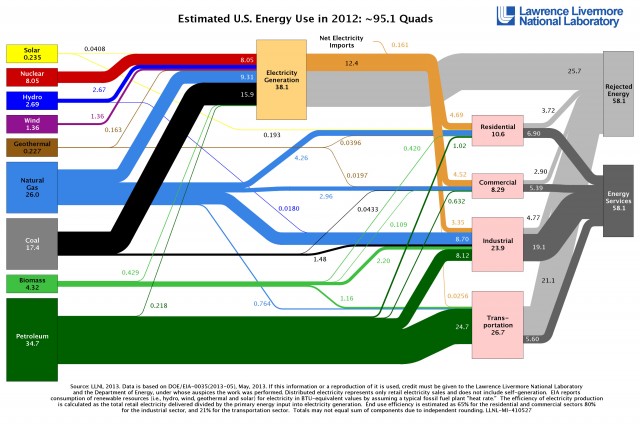US energy use dropped in 2012 as renewables, natural gas rose
Ars Technica » Scientific Method 2013-07-19
Each year, Lawrence Livermore National Lab provides an outline of the US' energy economy in the form of a giant flow chart that tracks all the major sources of energy, from solar to petroleum, and where that energy ends up, with categories of use including electrical generation and transportation. The analysis for 2012 has just been released and is located at top; click the image to see a more legible version.
The outlines of 2012 show little change, as coal, natural gas, and nuclear dominate electricity generation, while petroleum provides for almost all of the US' transportation needs, with small contributions from natural gas and biofuels. But things have been gradually shifting within that general scheme. To begin with, the overall energy use dropped compared to the year before, despite an overall growth in gross domestic product.
There was also a shift in sources of energy. Coal and petroleum both dropped, the former being displaced by natural gas. And this is taking place before any of the Obama administration's regulations on carbon dioxide emissions are finalized. But the low cost of natural gas is also inhibiting a power source that the Obama administration has encouraged: nuclear power. Over the last year, three sites housing a total of four reactors shut down. These were largely old plants in need of extensive repairs, and the low cost of natural gas simply made the repairs uneconomical. This scenario is likely to be repeated over the next several years, while the construction of any new plants is likely to take several more years.
Read 2 remaining paragraphs | Comments





